Analysis: The 6th Assessment Report of the Intergovernmental Panel on Climate Change
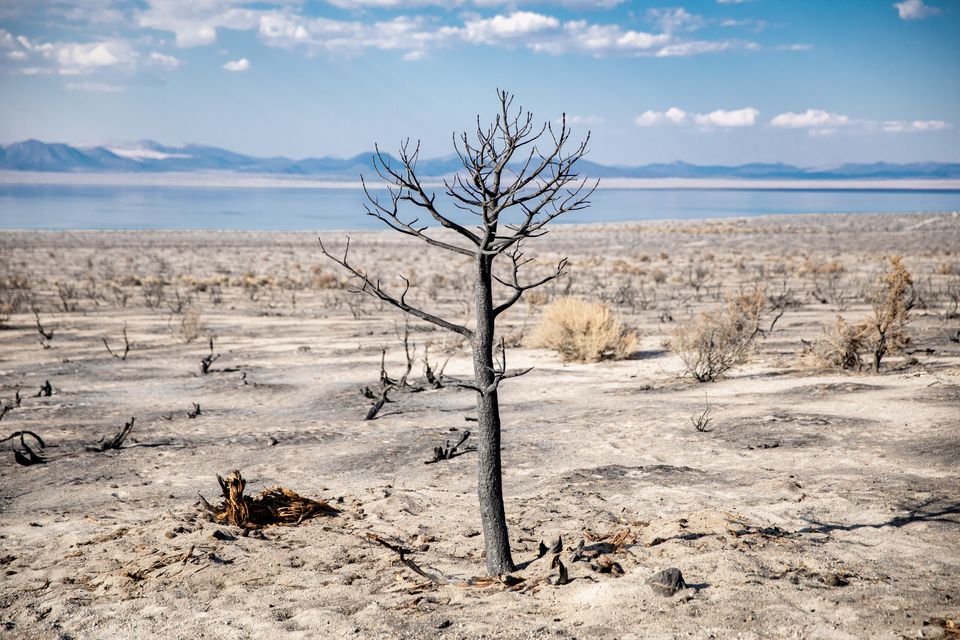
The 6th Assessment Report of the Intergovernmental Panel on Climate Change (IPCC) was published at a time when the world is in the midst of global crisis. In the face of environmental and geopolitical events taking place around the world, the IPCC report makes for discouraging reading. However, it also serves as a stark reminder that the time for climate action is now.
This Report is the second contribution to the tripartite Sixth Assessment Report (AR6) of the IPCC, building on the previous work of the first working group “Climate Change 2021: The Physical Science Basis,” released on August 9, 2021. The final contribution of Working Group III will be released in early April 2022.
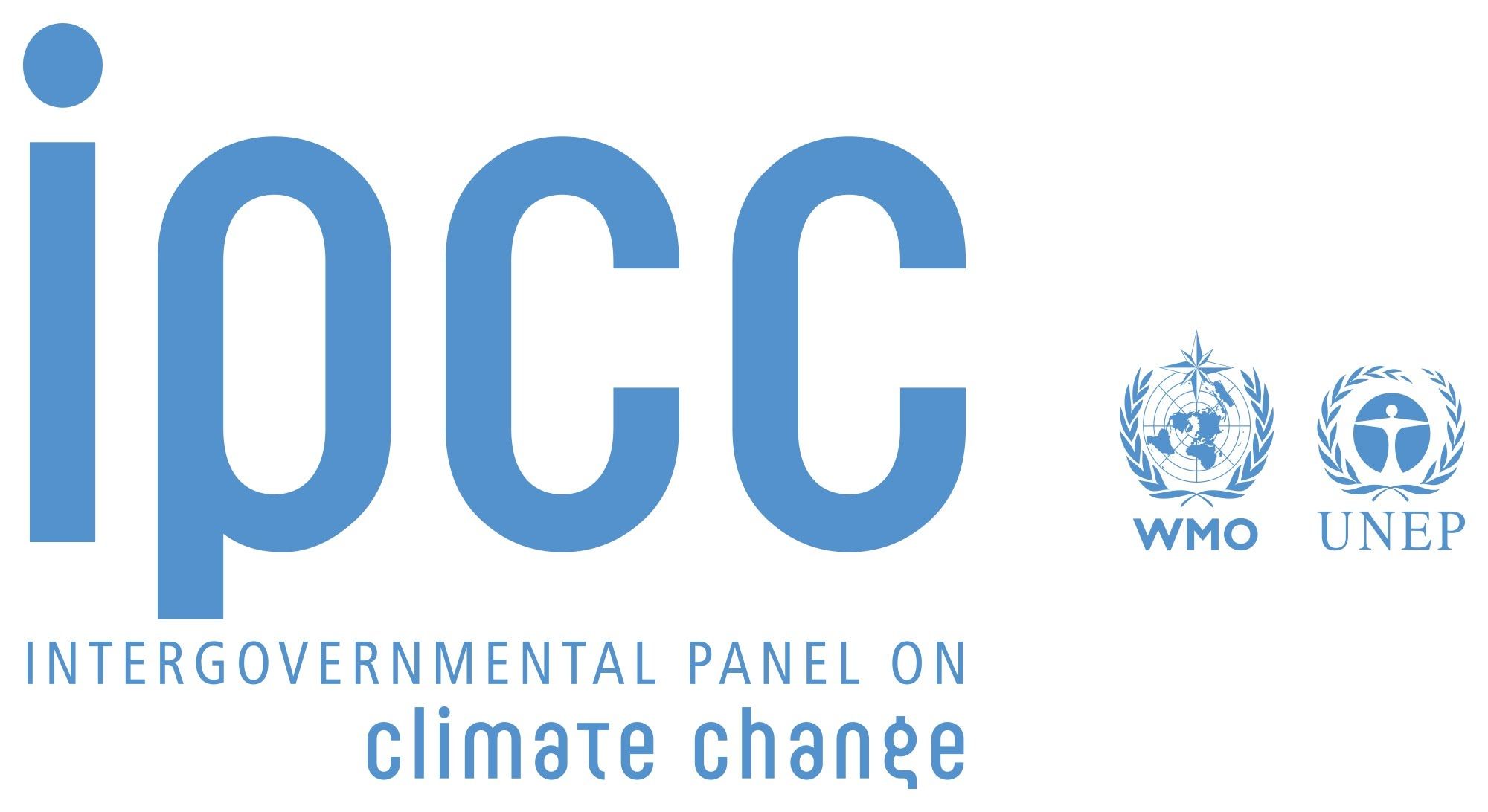
The latest report has a strong focus on the interactions and relationship between climate, ecosystems and human society. By using this manner of thinking, the report examines these interactions on the basis of emerging risks from climate change, ecosystem degradation and loss of biodiversity, whilst simultaneously offering opportunities and remedies for the future.
With all five illustrative scenarios assessed by the WGI, there is now at least a 50% likelihood that global warming will reach or exceed 1.5°C in the near future, even in a very-low greenhouse gas emissions scenario. To offer a more legal point-of-view on the report, we have to examine and consider four concepts addressed in the Report, these being; risks, impacts, the concept of vulnerability to climate change and adaptability.
Risks
Risk is an integral concept to environmental concerns and environmental law. Academics find risk to be an important concept as it “provides a framework for understanding the increasingly severe, interconnected and often irreversible impacts of climate change on ecosystems, biodiversity and human systems”.
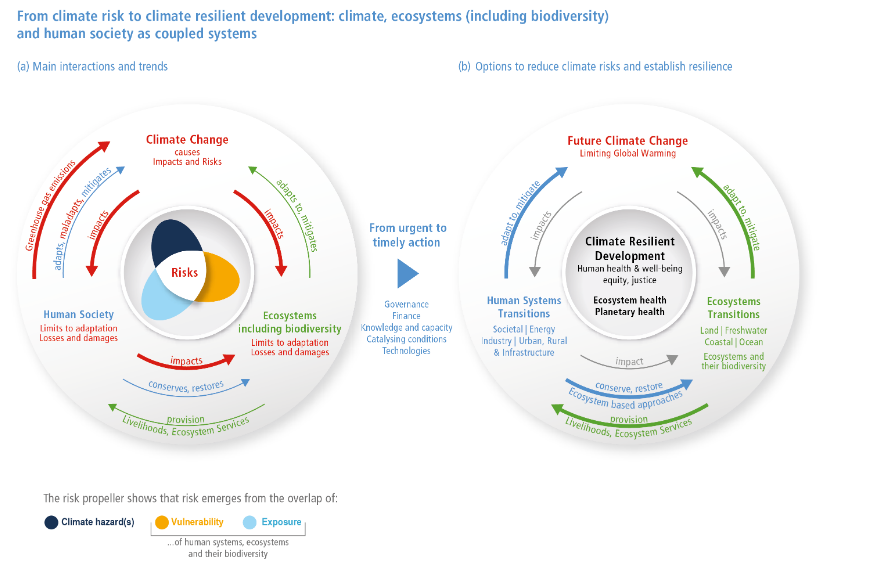
From the environmental law perspective, risk ties into the precautionary principle, one of the keystones of environmental law. The relationship between this principle and the concept of risk demonstrates the value, the importance, and the need for risk assessments. Out of the 127 key risks identified by the Report, these are divided between near-term risks (2021-2040) and long term (2041-2100).
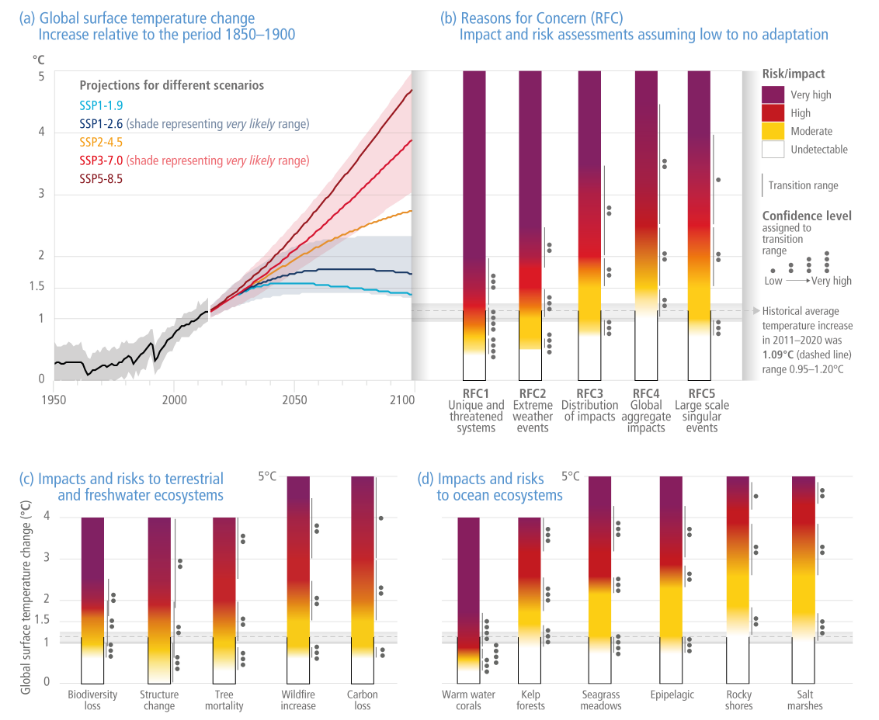
These risks make for dire reading in the face of the ongoing climate crisis. Near term fears include that global warming may reach 1.5 degrees within the near future, reaching the goal set forward by the Article 2 of the Paris Agreement. Despite appearing a small change, this could cause unavoidable increases in climate hazards and present risks to both natural and human ecosystems.
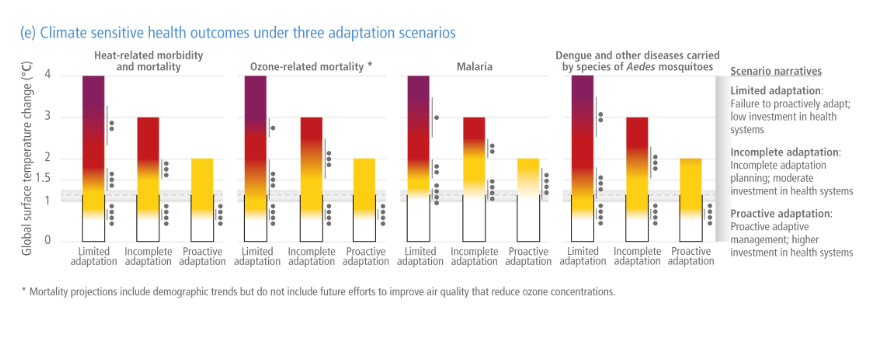
Although near-time projections claim that immediate action would substantially reduce projected losses, the report states it would be impossible to eliminate them all. The mid-long-term risks beyond 2041 depend on our actions now, but a climbing rate of global warming could mean that climate conditions past this date lead to catastrophic consequences for natural and human ecosystems.
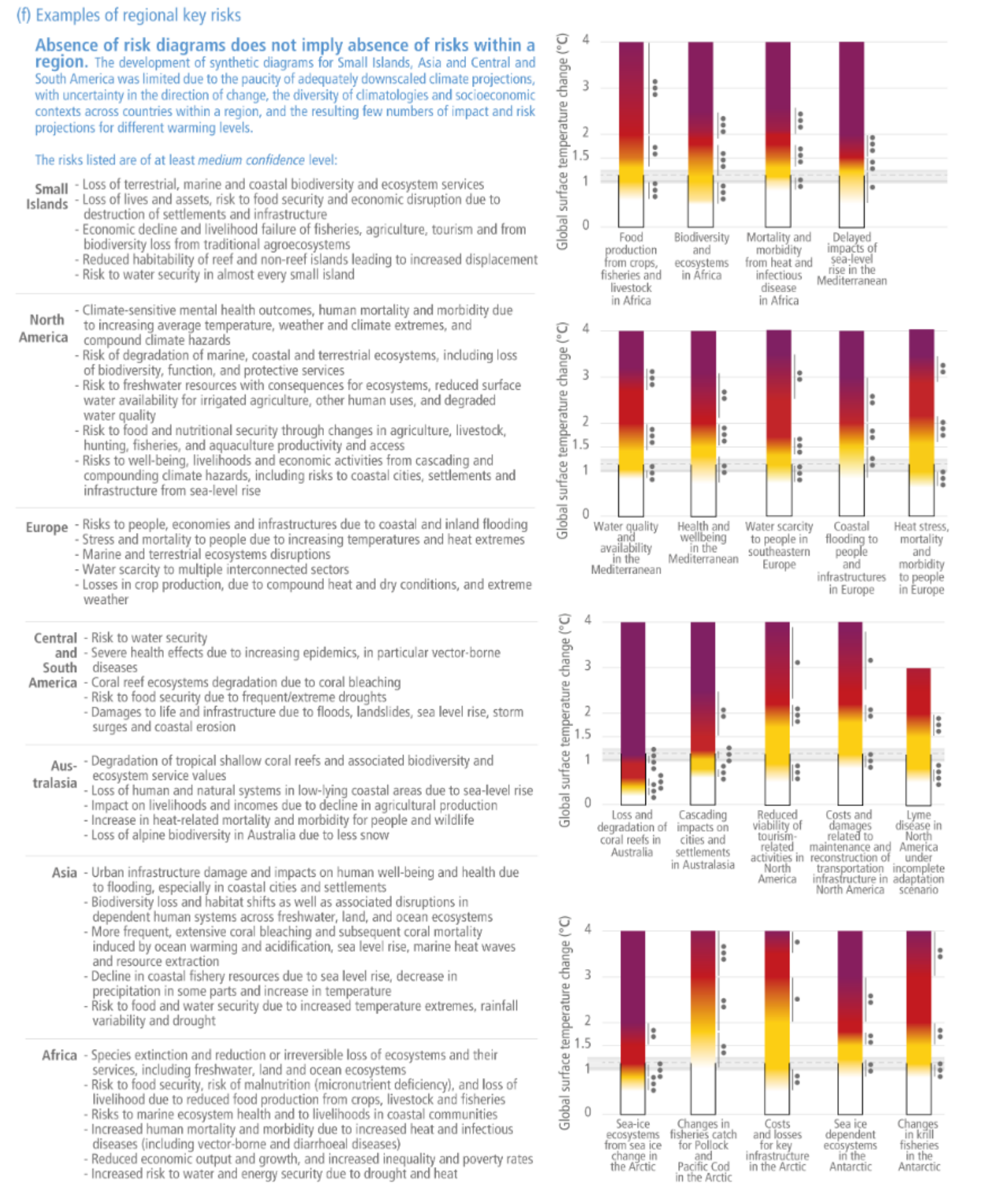
Impacts
The impacts of climate change are vast and severe. Among the observed impacts, these have resulted in “Widespread, pervasive impacts to ecosystems, people, settlements, and infrastructure have resulted from observed increases in the frequency and intensity of climate and weather extremes, including hot extremes on land and in the ocean, heavy precipitation events, drought and fire weather.”
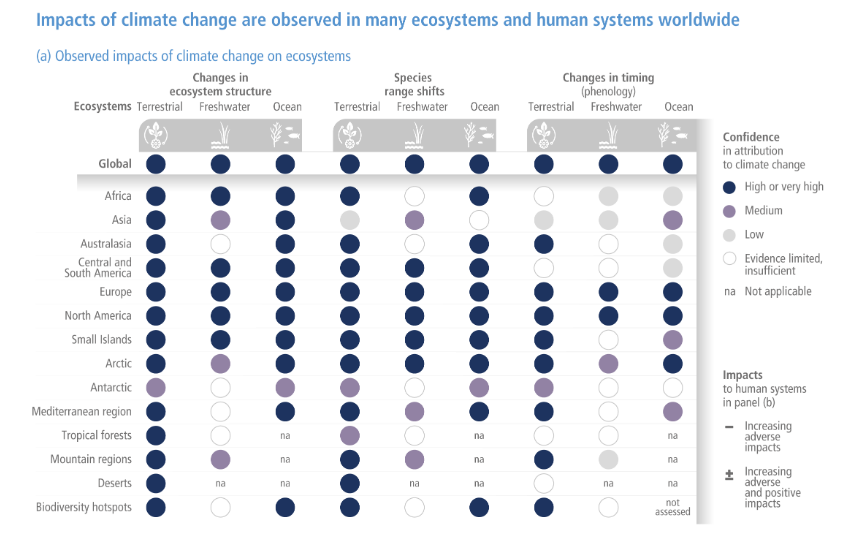
The report has identified some major areas of impact:
- Climate change including increases in frequency and intensity of extremes have reduced food and water security, hindering efforts to meet Sustainable Development Goals
- Climate change has adversely affected physical health of people globally and mental health of people in the assessed regions
- In urban settings, observed climate change has caused impacts on human health, livelihoods and key infrastructure
- Climate change is contributing to humanitarian crises where climate hazards interact with high vulnerability
What this list shows is that the impacts of global warming extend far and beyond the traditional expectations of warmer temperatures and rising sea levels. Critically, the fact that climate change can range from climate hazards to having a direct effect on human and animal mental health shows that the scope of impact is immense, and therefore demands to be treated seriously.
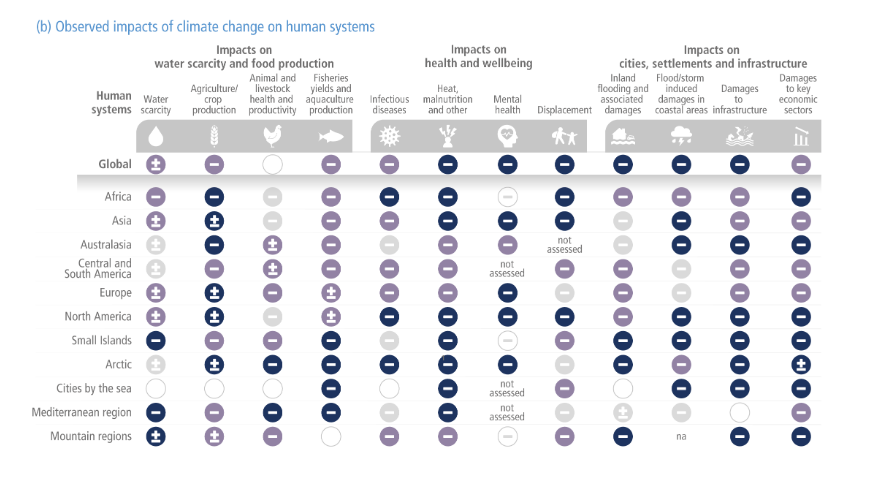
Concept of Vulnerability to Climate Change
As has been made clear by the report, nearly all walks of life are vulnerable to climate change, which would imply and demand the need for collective response to the problem. This links with the principle of common but differentiated responsibilities (CBDR), which recognises the existence of a common climate goal but differentiates between countries in the actions required to achieve that goal.
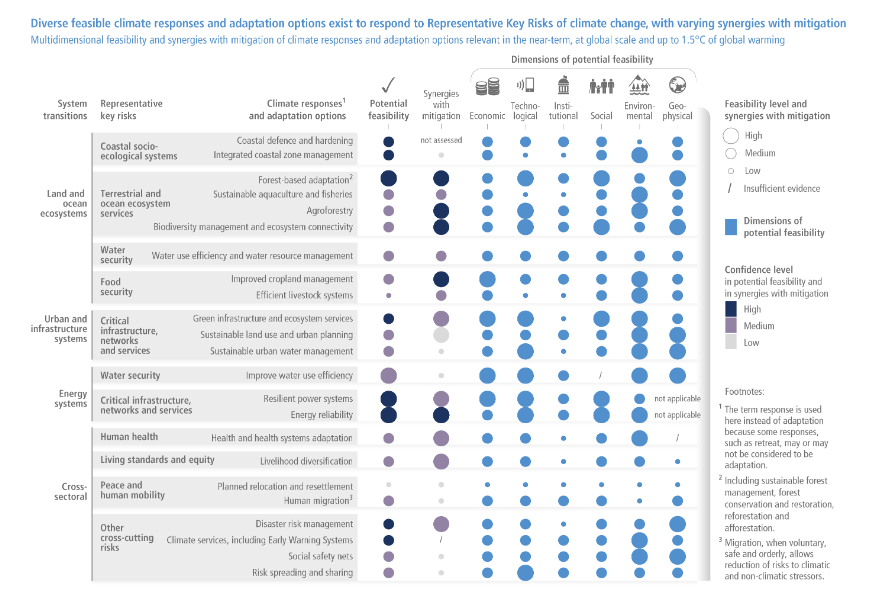
The principle at the centre of this implies that whilst the battle against climate change is common, with such frameworks such as the United Nations Framework Convention on Climate Change (UNFCCC) and the Paris Agreement, it recognises that some countries, as a result of their climate conditions, ecological conditions, economic conditions and other factors, may require different responses to each-other. This principle has been echoed through the previous IPCC Assessment Report and remains valid, both ethically and legally, today.
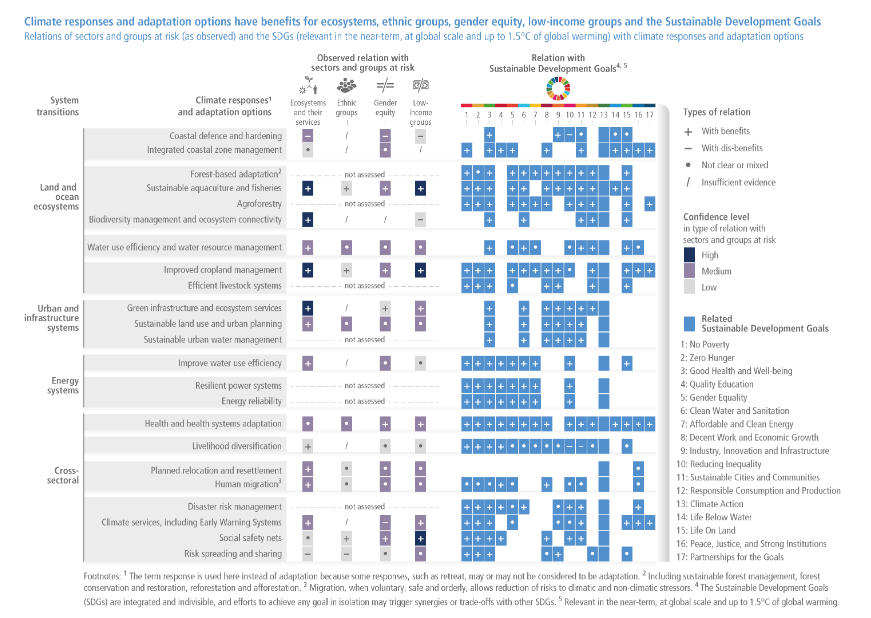
Adaptability
The concept of adaptation was a point of prevalent focus in the previous edition of the IPCC Assessment Report. Truly, the concept of adaptability in the face of changing climate conditions is Darwinian in nature, and is already practised by animal and plant species, such as migratory birds.
However, even those species accustomed to changing climate conditions such as winter into spring will likely not be able to survive in the face of the extreme changes brought around by global warming. The Paris Agreement speaks to this effect, with Article 7 providing a legal basis for adaptability. It identifies the goal of adaptation to; enhance adaptive capacity and resilience, and to reduce vulnerability, with a view to contributing to sustainable development.
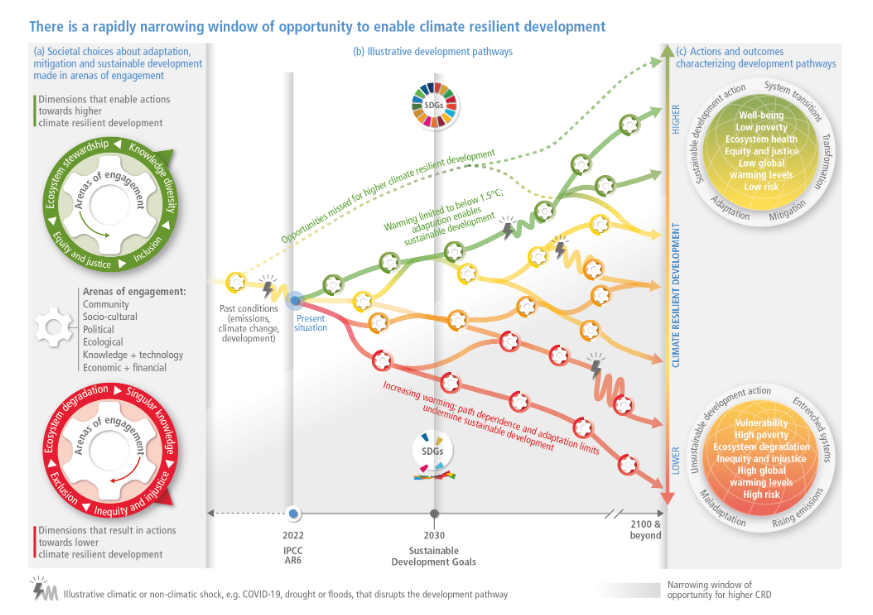
Key Analysis from the Assessment Report
The core approach to this Report seems to promote a more holistic approach to climate change, and a rather horizontal system of interactions between the climate, ecosystems, and human society. This manner of thinking steers towards an ecocentric conception of nature, one where the environment does not belong to humans but rather that the position of man in nature should be humbled, and that we as humans belong to nature, rather than the other way around. This manner of thinking has begun to gain serious traction, and we may start seeing more ecocentric viewpoints in climate practice and environmental law in the near future.

The key areas demanding focus from the Assessment Report (risk, adaptation, vulnerability, exposure, resilience, equity and justice, transformation) are all concepts that are continued over from previous IPCC reports. This shows that not only are these areas are of significant importance to the fight against global warming, but perhaps that more stress is required that is being given to these areas in law. The assessment of risk is a prime example due to its links with the precautionary principle, which acts to bring in concepts of environmental law into the wider climate change debate.
However, the most interesting area to be examined, with perhaps the largest legal consequence from the report is the focus on adaptation. The significance of this speaks to the debate between adaptation vs mitigation. The stress placed upon adaptation by Article 7 of the Paris Agreement, shows that the concept has become an integral part of international climate change law.
Overall, the assessment report makes dire reading for everyone. Through the statistics and the stark effects of environmental law, one key point has stood out, highlighting the very real and inevitable nature of global warming. We have reached a point where the short-term effects of climate change are guaranteed, and that our strategy as a planet must now be to adapt to the world we have helped create, should serve as a sobering wake-up call that not enough is being done to combat climate change on a regional, continental or global scale.
Subscribe to Lawyers for Nature & Join our Community
If you are on the website, enjoyed this blog and are yet to subscribe to the Lawyers for Nature newsletter, you can click the button at the bottom right hand corner of this page, or simply click here. You can also use our Contact Page if you would like to reach out directly, or simply join our Community Discord Server. Please also consider attending our Litigation Strategy Hackathon on March 17th, 2022.
We look forward to working with you.




